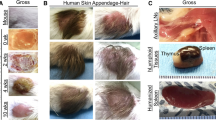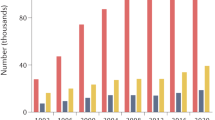Abstract
THE rejection of skin grafts has been a standard laboratory test for histocompatibility for many years. It is now clear, however, that not all transplanted organs behave in the same way as skin; the pig, for example, rapidly rejects a skin or kidney graft from another member of the species, but only rejects a liver transplant very slowly, if at all1. Likewise, rats of the Lewis and Fisher strains will reject skin grafts exchanged between them, but are quite unable to reject kidney transplants2. With a more “incompatible” strain combination, such as Lewis and Brown Norway, kidney transplants are rejected although the occasional rat survives for up to 30 days3.
This is a preview of subscription content, access via your institution
Access options
Subscribe to this journal
Receive 51 print issues and online access
$199.00 per year
only $3.90 per issue
Buy this article
- Purchase on Springer Link
- Instant access to full article PDF
Prices may be subject to local taxes which are calculated during checkout
Similar content being viewed by others
References
Calne, R. Y., Brit. Med. J., 4, 645 (1967).
White, E., and Hildemann, W., Second Intern. Cong. Transplant Soc. (1968).
Stuart, F., Surgery, 64, 17 (1968).
Feldman, J., and Sun Lee, J. Exp. Med., 126, 783 (1967).
Shiel, A. G. R. Advances in Transplantation, 599 (Munksgaard, 1968).
Author information
Authors and Affiliations
Rights and permissions
About this article
Cite this article
SALAMAN, J. Renal Transplantation between Two Strains of Rats. Nature 220, 930–931 (1968). https://doi.org/10.1038/220930a0
Received:
Issue Date:
DOI: https://doi.org/10.1038/220930a0
Comments
By submitting a comment you agree to abide by our Terms and Community Guidelines. If you find something abusive or that does not comply with our terms or guidelines please flag it as inappropriate.



